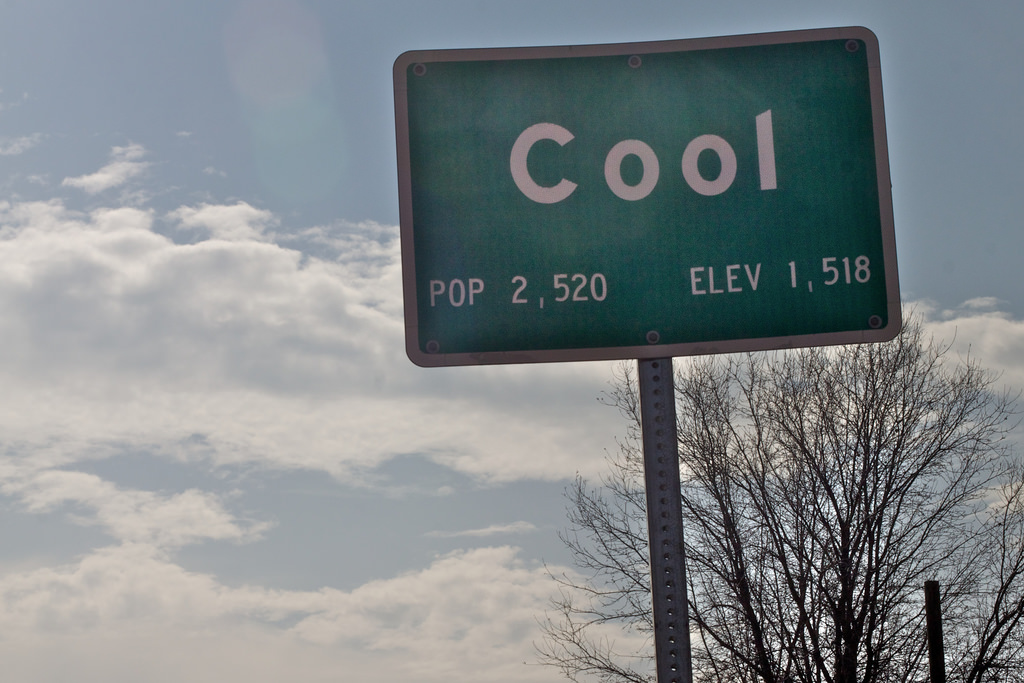In Way Too Cool’s introduction, Winnubst convincingly traces “cool” as “[an] aesthetic that began in U.S. black culture” that not only celebrated and encouraged nonconformity, but offered ways for black Americans to resist white supremacy. Due to this history, the neoliberal “hollowing out,” commoditization of, and re-selling of cool to mostly middle-class and above white Americans is not an equalizer or a neutral “sharing” of culture so much as it is a weak copy of a copy that is, crucially, de-politicized and made “safer.”
Way Too Cool is a theory-heavy volume with an outstanding premise; it is not a history of “cool” itself so much as a treatise on neoliberalism and how neoliberal systems “de-fang” (so to speak) modes of minority resistance so that that “resistance” can be marketed to the majority as a new hip thing. One of the major problems with depoliticizing formerly cool modes of resistance as new and hip, however—especially in this era of neoliberalism—is that when the majority gets tired of the new thing, it’s likely to be thrown away, with little regard for the original mode(s) of resistance (and the people who create those works) that inspire the safe, marketable, majority-ready imitation.
 Throughout the book, Winnubst includes several short “interlude” chapters that highlight case studies in the commoditization of cool—among them Joe Cool, (Snoopy’s alter-ego from the Peanuts cartoons), John Lennon’s song “Instant Karma,” and David Beckham’s metrosexuality—and these interludes, though short, work extremely effectively as complementary material to the more theory-laden chapters. This is not to say that Winnubst’s reliance on theory is bad—Way Too Cool is an academic volume, after all—but the shorter chapters go a long way in grounding Winnubst’s often densely stacked theoretical arguments that make up the rest of the book.
Throughout the book, Winnubst includes several short “interlude” chapters that highlight case studies in the commoditization of cool—among them Joe Cool, (Snoopy’s alter-ego from the Peanuts cartoons), John Lennon’s song “Instant Karma,” and David Beckham’s metrosexuality—and these interludes, though short, work extremely effectively as complementary material to the more theory-laden chapters. This is not to say that Winnubst’s reliance on theory is bad—Way Too Cool is an academic volume, after all—but the shorter chapters go a long way in grounding Winnubst’s often densely stacked theoretical arguments that make up the rest of the book.
That said, Winnubst clearly knows her theory, and it’s impressive that her theoretical base for Way Too Cool is so broad; she builds her arguments skillfully by utilizing, among other frameworks, Foucault’s lectures on biopolitics, Louis Althusser’s celebrated examination of interpellation and the state, Jodi Dean’s work on subject formation and neoliberalism, Jacques Lacan’s concept of the objet-a (object little-a) and psychoanalysis, Aihwa Ong’s work on precarity and labor, and critical race theory. One of the unintended consequences of Winnubst’s diligence in citing other theorists and disciplines is that she forms an almost dizzying array of theoretical points, connections, and sources that, at times, almost threaten to topple some of Winnubst’s overall points by virtue of the sheer amount of material that she synthesizes here. Way Too Cool was obviously written for a specifically academic audience, but there were points in the book where I found myself frustrated at some chapter segments that seemed to obscure otherwise good points with convoluted language.
For the most part, Winnubst’s theoretical molding and argument building in Way Too Cool is incredibly interesting; it’s to her credit that the book as a whole provides readers with a nuanced, impeccably researched perspective on questions concerning the cooptation and marketing of the resistance strategies of minority groups. Way Too Cool is an important book; however, readers who are new to theory, cultural studies, and the concept of neoliberalism may want to look elsewhere.
Photo: Adam Levine/Creative Commons

